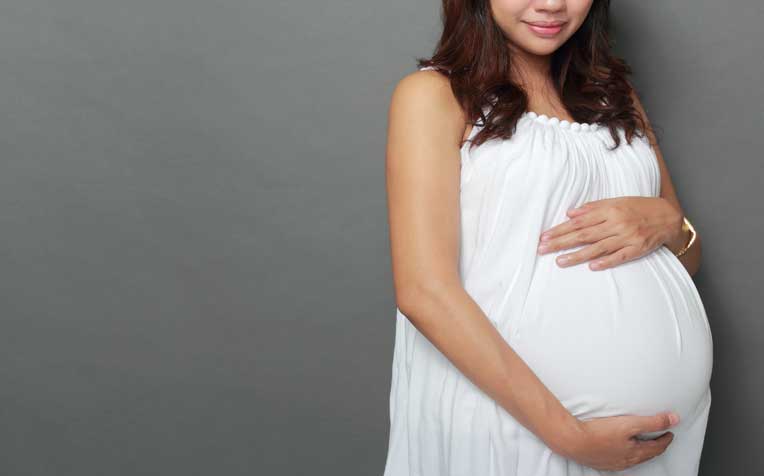Non-English translations are machine-generated; verify independently for
potential
inaccuracies.
Let us help you find what you're looking for.
Popular Searches
Pregnancy Tips: Clothing and Hair Dye

It is best to avoid hair dyeing or rebonding your hair once you've conceived.
Tips for clothing, footwear and hair products during pregnancy
Clothing in pregnancy
- The womb does not grow out of the pelvis until 12 weeks of pregnancy and most women will still get away with wearing their normal clothes until then.
- By 14–16 weeks, the belly starts protruding and you will need to wear looser or more elasticised pants or skirts. Between 18–22 weeks, the waistline thickens, and your clothes need to accommodate this for your comfort.
- The body temperature increases during pregnancy and thus light, breathable clothing made of wool or cotton is the most comfortable. Shorts/skirts or pants with an elastic or drawstring waist made from stretchy materials that can grow with your waist are ideal at this time.
- As long as pregnant women are comfortable in their clothing and the clothing is not too restrictive or tight, it should not impede the development of the baby.
- Exposing the belly has no known adverse effects on the developing baby.
- Normal underwear can be worn during pregnancy. However, some women prefer oversized underwear to pull up over their bump. During pregnancy, there is a change in vaginal discharge because of the rise in body temperature. Pregnant women are thus more prone to fungal and bacterial infections. Cotton underwear will keep the perineal area ventilated and discourage the growth of these organisms.
- Avoid wearing tight socks or half leg stockings during pregnancy as these can reduce blood circulation from the feet and lower legs, thus increasing swelling, fluid retention and aggravating varicose veins.
- When traveling in a car, always wear a seat belt to protect you and your unborn baby. The seat belt should be a three-point restraint with a lap and shoulder belts.
Footwear in pregnancy
- Your feet increase in size during pregnancy due to water retention in the legs. Also, pregnant women are prone to falling and tripping due to changes in the centre of gravity and dynamics. For these reasons, flat and low-heeled shoes are ideal. Backless shoes made of flexible material can accommodate changes to your feet.
Hair-dyeing, hair rebonding and perming in pregnancy
- During pregnancy there is concern that using hair dyes and hair straightening agents might result in chemicals being absorbed into the bloodstream even though most chemicals are normally cleared from the bloodstream fairly quickly. Unfortunately, there have been very few studies conducted on the use of such products during pregnancy to quantify the risk of hair dyes to a developing baby.
- While no one can provide reliable data about timing and safety, it is best to avoid dyeing or rebonding your hair once you have conceived.
- Perming hair during the second and third trimesters of pregnancy is a safe procedure and can make caring for hair less time consuming and easier. There are no studies that indicate perming of hair during pregnancy is detrimental to the foetus.
"The New Art and Science of Pregnancy and Childbirth", a pregnancy book by KK Women's and Children's Hospital (KKH), a member of the SingHealth group.
Ref: X08
Related Articles
Conditions & Treatments
Public Events
03 Jul 2025
Talks
Health Talk: Nutrition Demonstration @ SHP-Bedok
Free, no registration required. Please walk in to clinic at specified date and time.
Learn More
04 Jul 2025
Talks
Health Talk: Weaning Diet @ SHP-Tampines North
Free, no registration required. Please walk in to clinic at specified date and time.
Learn More
05 Jul 2025
Workshop
KKH Child and Infant CPR Workshop
On-site
•
$25 per pax for KK Parenting Club Member; $35 per pax for Non-member
Learn More
09 Jul 2025
Talks
Health Talk: Fall Prevention @ SHP-Marine Parade
Free, no registration required. Please walk in to clinic at specified date and time.
Learn More
Get the Health Buddy App
© 2025 SingHealth Group. All Rights Reserved.

















 Get it on Google Play
Get it on Google Play